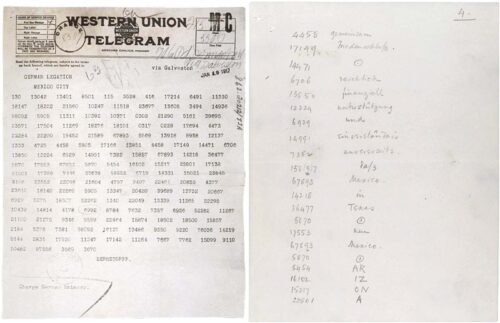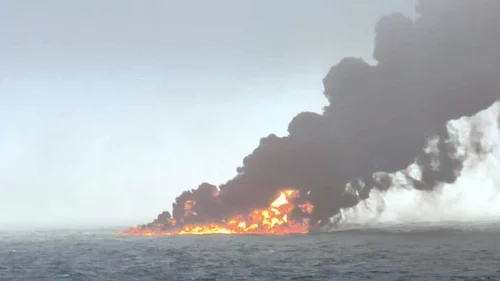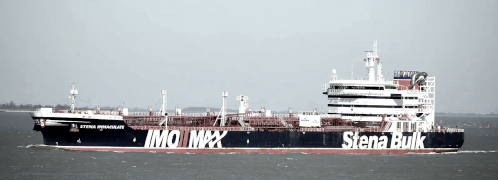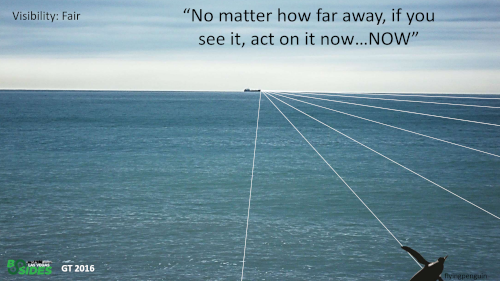Ryback’s “Worse Than Signalgate” analysis in The Atlantic of the Zimmermann Telegram affair represents the kind of simplistic, great-man historiography that we’ve spent decades trying to eradicate from serious historical discourse.
The article’s framing of the incident as mere diplomatic bungling rather than a calculated intelligence operation is not merely incomplete—it’s intellectually dishonest.
Let me be perfectly clear: The Zimmermann Telegram was not primarily a story of German incompetence, but rather of British intelligence brilliance in a targeted campaign to neutralize pro-German sympathies in America, particularly those held by influential figures like President Wilson and industrialist Henry Ford.
For those unfamiliar with this pivotal event: In January 1917, German Foreign Minister Arthur Zimmermann sent an encrypted message proposing that Mexico join Germany against the United States if America entered World War I. Germany promised to help Mexico recover territories lost to the U.S. (Texas, New Mexico, and Arizona) and suggested Mexico invite Japan to join this alliance. British intelligence intercepted and decoded this message, then strategically released it to the American public through the press in February 1917. The telegram’s content was so incendiary that it helped overcome Wilson’s resistance to war, despite his previous stance against intervention. What Ryback fails to grasp is that this was not simply a German diplomatic blunder, but a calculated British intelligence operation designed to circumvent pro-German American leadership.

It would be like today decoding a Putin memo that revealed Russia interfered with the Presidential election to put Trump in office, is behind the NRA pushing guns even as mass murders spread, and funds campaigns to get Texas and California to secede. Or perhaps even more shrewdly, points out the heated campaign to transfer corporations and manufacturing to Texas is foreshadowing of a Russian campaign for Texas to secede like Brexit.
Ryback’s article conveniently omits there was an extensive German sabotage campaign on American soil—over 40 documented bombing incidents between 1914 and 1917, including the Black Tom explosion that damaged the Statue of Liberty. Wilson’s administration consistently intentionally misdirected blame toward leftists, anarchists, and labor agitators while knowing full well that German agents were the actual perpetrators.
The July 1916 Preparedness Day bombing in San Francisco serves as a perfect example of this deliberate misdirection, with local labor leaders Thomas Mooney and Warren Billings falsely imprisoned while clear ties to German involvement was suppressed.
What makes Wilson’s denialism all the more egregious is that ordinary Americans were acutely aware of the wave of suspicious fires, explosions, and acts of sabotage sweeping the nation. Newspapers from coast to coast reported on these “accidents” at munitions plants, shipping facilities, and infrastructure targets. The pattern was unmistakable to anyone paying attention – a veritable domestic Holocaust of German-orchestrated destruction.
While Americans buried their dead following the Black Tom explosion and the Kingsland munitions plant fire, Wilson’s administration continued its calculated misdirection campaign, attributing these acts to labor unrest or simple industrial accidents. This deliberate obfuscation occurred even as federal investigators privately compiled evidence of German involvement.
When British intelligence finally bypassed Wilson with the Zimmermann Telegram revelation, it wasn’t just exposing German intentions—it was circumventing an American president who had systematically lied to his own citizenry about clear and present dangers on American soil.
Ford’s pro-German involvement is particularly egregious in its omission. Far from being a mere “isolationist,” Ford was actively operating as anti-American, accepting millions in German funds while failing to deliver promised agricultural equipment, as harshly pointed out by congressional rebukes.
His anti-Semitic publications aligned with and promoted German propaganda aims (Hitler and Goebbels both credited Ford for influencing them). His opposition to American entry into the war wasn’t simply isolationism or pacifism but part of a broader ideological position that actively worked to undermine American principles and security interests.
Wilson himself had campaigned on keeping America out of war, implicitly to aid German militant aims, and maintained back-channel communications with German officials well into 1917.
The British intelligence operation around the Zimmermann Telegram therefore must be understood in full context as a sophisticated psychological operation targeting the American public directly, deliberately circumventing high profile pro-German sympathizers even ones in positions of oligarchial power.
Room 40’s work wasn’t merely clever codebreaking; it was a masterful influence operation that recognized the power of public opinion over elite preferences in American politics.

Ryback’s framing of Zimmermann as merely delusional misses the obvious wider German strategy of global destabilization—from their support of Irish republicans to their activation of terror networks in British India. The telegram was but one component within a sophisticated global strategy, far from incompetent, that the British correctly identified and countered.
This breezy Atlantic article offers a superficial, decontextualized history that contributes unnecessary flap and noise to a proper understanding of highly skilled intelligence operations, directed public opinion manipulation, or the genuine complexity of Ford and Wilson’s toxic false neutrality. They weren’t neutral, they were actively and directly harming Americans.
The incongruity in Wilson’s leadership – reluctance to confront foreign threats while eagerly suppressing domestic groups – is the cruel understated aspect of his presidency that complicates any conventional narrative of Wilson as principled.
His hesitation to directly condemn German actions, even after American ships were sunk, contrasts sharply with his administration’s swift and brutal responses to perceived domestic threats.
Wilson’s administration was remarkably aggressive in suppressing leftist political movements. The Espionage Act of 1917 and Sedition Act of 1918 were used to imprison hundreds of labor activists, socialists, and anti-war protesters. Eugene V. Debs, who had received nearly a million votes as the Socialist Party presidential candidate, was sentenced to 10 years in prison essentially for giving an anti-war speech.
And yes, Wilson’s racial policies were particularly devastating. His administration resegregated federal offices that had been integrated since Reconstruction. He screened “Birth of a Nation” at the White House, effectively endorsing its racist narrative and helping fuel the revival of the KKK.
The 1919 Elaine Massacre is a perfect example. When Black sharecroppers in Arkansas organized to demand fair payment for their cotton, white mobs attacked them. Rather than protecting these American citizens being attacked for exercising their rights, the Army was deployed by Wilson to attack them further, resulting in the shooting deaths of hundreds of Black Americans by federal troops.
This pattern reveals a deeply troubling aspect of Wilson’s worldview when the Zimmerman telegram landed. The President seemed far more willing to extend understanding and restraint to certain powers, even hostile ones, than to extend basic constitutional protections to Black Americans or his political opponents at home.
Technical Appendix: The British Room 40 Operation in Detail
I’ve called the British intelligence operation clever, but let me elaborate on why this characterization is warranted. While a Zimmermann Telegram brought the power of the public in the United States to bear down on the deeply racist and corrupted President Wilson and his cronies, the British had managed this all without blowing their operation. Room 40 didn’t just see the message and decode it, they used simple espionage theater to keep their war-winning methods a secret.
- Double Intercept: both an original high-strength cracked cipher version and a weakened known-vulnerable copy from Mexico were used. The latter “internal” communication between America and Mexico gave the British a cover story for how and where they “found” it.
- Deception by Omission: The Americans were told a true story about American officials caught working on the side of Germany (which meant against America), yet were not told that German communications had been cracked.
- Protected Assets: Keeping Room 40 a secret meant the British preserved a massive intelligence edge for the rest of the war, similar to how Polish intelligence cracked the Nazi Enigma in WWII and yet are rarely if ever credited properly even to this day.
- Let the Enemy Fall Into It: The telegram’s authenticity was confirmed by Zimmermann, unaware of British methods.
Although the codebreaking unit in Room 40 had cracked and validated Germany’s top diplomatic cipher, they couldn’t let the Germans find out and shut down a critical intelligence stream. The telegram from Germany to Mexico proposing an alliance against the U.S. needed another path as a plausible origin story.
- August 5, 1914 — British cable ship HMTS Alert was ordered by Admiralty to cut Germany’s five undersea telegraph cables, just one day after declaration of war. These were the major transatlantic cables that connected Germany directly to North America and other global regions. Notably, Germany saw America secretly as an ally against Britain and thus switched communications to its “neutral” lines, which meant even using American diplomatic channels on the American cables. That’s exactly where British intelligence was listening.
- January 16, 1917 — Zimmermann’s telegram routes from Berlin to the German ambassador in Washington DC, via the U.S. diplomatic cables that it believed to be secure from the British because American. British intelligence intercept this message and decipher it, realizing important value.
- February 1–3, 1917 — British agents quietly obtain a second version of the telegram that had been forwarded from Washington DC to Mexico City, due to a less secure cipher widely known to be compromised. Germany also angrily announces that it will immediately resume unrestricted submarine warfare to sink passenger ships, prompting President Wilson to declare to the Senate that he is totally surprised by such a thing and waiting to see any evidence of “actual overt acts” of harm.
I cannot bring myself to believe that [Germany] will indeed pay no regard to the ancient friendship between their people and our own or to the solemn obligations which have been exchanged between them, and destroy American ships, and take the lives of American citizens in the wilful prosecution of the ruthless naval program they have announced their intention to adopt. Only actual overt acts on their part can make me believe it even now.
Immediately, German U-boats attacked and sank the Housatonic, and then three days later attacked and sank the 470-ft passenger ship SS California off the Irish coast, killing nearly 50 people in just 10 minutes. Yet again, for at least the second year, Wilson’s calculated and cruel inaction leaves American blood on his hands. On the 12th the schooner Lyman M. Law is sunk.
- February 19, 1917 — Britain’s Admiral Hall presents the Zimmerman telegram to U.S. officials, explaining it had been discovered in Mexico coming from American diplomatic channels.
- March 1, 1917 — Unable to continue pretending it has a “neutral” role while allowing years of German attacks killing Americans, alarms about the telegram are rising, and the British propel the news all the way into U.S. newspaper headlines.
- March 3, 1917 — Zimmermann inexplicably confirms the telegram’s authenticity, removing all doubt in the public eye.
- March 12, 1917 — steamship Algonquin is sunk, followed four days later by the sinking of the US steamship Vigilancia without warning, killing 15 (including six Americans), and soon after the sinking of the US oil tanker Healdton, killing 21 (including seven Americans).
- April 6, 1917 — unable to waffle and wiggle any longer, having knowingly allowed horrible attacks on Americans to run unanswered for years, Wilson finally is compelled by public outrage to declare war on Germany.
The Atlantic article fundamentally misses that the Zimmermann event represented a meticulously planned intelligence operation by Britain’s top talent, who embedded a public sentiment campaign within a seemingly neutral document while secretly preserving their ability to continue decoding German communications.
This wasn’t simply German incompetence meeting British luck—it was strategic calculation meeting strategic counter-calculation, a far more nuanced and historically significant interaction. In fact, the deep and careful British intelligence work was so effective that, even a century later, some historians still appear to be confused. They portray Zimmermann as incompetent rather than someone with reasonable expectations of ongoing American sympathy through the toxicity of an extremist pro-German President Wilson—even for Germany’s own territorial ambitions (a historical parallel with differently disturbing modern echoes, like how Trump serves Russia today).



